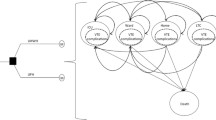Abstract
Method: We used a previously described economic model created in the context of the UK National Health Service and applied it to St. Thomas’ Hospital, London. A clinical review to determine the number of medical admissions that would require thromboprophylaxis at St. Thomas’ Hospital, based on the inclusion criteria of a medical thromboprophylaxis trial (MEDENOX), was conducted. Costs and effectiveness were determined, based on the provision of thromboprophylaxis to 2000 medical patients.
Results: Comparing treatment with low-molecular-weight heparin (enoxaparin, 40 mg once daily), unfractionated heparin (5000 IU twice daily), or no prophylaxis, the highest cost of thromboprophylaxis was associated with unfractionated heparin (£199,000=€306,000), compared with enoxaparin (£198,000=€305,000) or no prophylaxis (£176,000=€271,000). The model suggested that enoxaparin thromboprophylaxis would result in fewer thromboembolic-related events. Using sensitivity analysis, incorporating certain St. Thomas’-specific costs showed enoxaparin compared with unfractionated heparin or no thromboprophylaxis was cost saving. The cost savings of £65,000 (=€100,000) and £31,000 (=€48,000) respectively are based on maximum uptake of thromboprophylaxis.
Conclusions: The graded implementation of enoxaparin thromboprophylaxis over a four-year period would require funding redistribution. The funding Health Authority would save overall but St. Thomas’ would require an increase in drug expenditure across the clinical directorates of £35,000 (= €54,000) after 4 years.
Similar content being viewed by others
References
Noble S, Peters DH, Goa KL. Enoxaparin. A reappraisal of its pharmacology and clinical applications in the prevention and treatment of thromboembolic disease. Drugs 1995; 49: 388–410.
Harvey DM, Offord RH. Management of venous and cardiovascular thrombosis: enoxaparin. Hosp Med 2000; 61: 628–36.
Bates SM, Hirsh J. Treatment of venous thromboembolism. Thromb Haemost 1999; 82: 870–7.
Nicolaides AN. Prevention of venous thromboembolism. International Consensus Statement. Guidelines compiled in accordance with the scientific evidence. Int Angiol 2001; 20: 1–37.
Geerts WH, Heit JA, Clagett GP et al. Prevention of venous thromboembolism. Chest 2001; 119: 132S–175S.
Sandler DA, Martin JF. Autopsy proven pulmonary embolism in hospital patients: are we detecting enough deep vein thrombosis? J R Soc Med 1989; 82: 203–5.
Goldhaber SZ. Venous thromboembolism prophylaxis in medical patients. Thromb Haemost 1999; 82: 899–901.
Goldhaber SZ, Dunn K, MacDougall RC. New onset of venous thromboembolism among hospitalized patients at Brigham and Women's Hospital is caused more often by prophylaxis failure than by withholding treatment. Chest 2000; 118: 1680–4.
Samama MM, Cohen AT, Darmon JY et al. A comparison of enoxaparin with placebo for the prevention of venous thromboembolism in acutely ill medical patients. Prophylaxis in Medical Patients with Enoxaparin Study Group. N Engl J Med 1999; 341: 793–800.
Mismetti P, Laporte-Simitsidis S, Tardy B et al. Prevention of venous thromboembolism in internal medicine with unfractionated or low-molecular-weight heparins: a meta-analysis of randomised
Drummond M, Aristides M, Davies L, Forbes C. Economic evaluation of standard heparin and enoxaparin for prophylaxis against deep vein thrombosis in elective hip surgery. Br J Surg 1994; 81: 1742–6.
Oster G, Tuden RL, Colditz GA. Prevention of venous thromboembolism after general surgery. Cost-effectiveness analysis of alternative approaches to prophylaxis. Am J Med 1987; 82: 889–99.
Oster G, Tuden RL, Colditz GA. A cost-effectiveness analysis of prophylaxis against deep-vein thrombosis in major orthopedic surgery. JAMA 1987; 257: 203–8.
Nuijten MJ, Antonanzas Villar F, Kosa J et al. Cost-effectiveness of enoxaparin as thromboprophylaxis in acutely ill medical patients in Spain. Value Health 2003; 6: 126–36.
Nuijten MJ, Berto P, Kosa J et al. Cost-effectiveness of enoxaparin as thromboprophylaxis in acutely ill medical patients from the Italian NHS perspective. Rec Prog Med 2002; 93: 80–91.
Lloyd AC, Anderson PM, Quinlan DJ, Bearne A. Economic evaluation of the use of enoxaparin for thromboprophylaxis in acutely ill medical patients. J Med Econ 2001; 4: 99–113.
Pechevis M, Detournay B, Pribil C et al. Economic evaluation of enoxaparin vs. placebo for the prevention of venous thromboembolism in acutely ill medical patients. Value Health 2000; 3: 389–96.
De Lissovoy G, Subedi P. Economic evaluation of enoxaparin as prophylaxis against venous thromboembolism in seriously ill medical patients: a US Perspective. Am J Man Care 2002; 8: 1082–8.
Lamy A, Wang X, Kent R et al. Economic evaluation of the MEDENOX trial: a Canadian perspective. Medical Patients with Enoxaparin. Can Respir J 2002; 9:169–77.
Hampton KK. Thromboprophylaxis in medical patients. Hosp Med 2000; 61: 656–9.
Kleber FX, Witt C, Flosbach CW, Koppenhagen K, and the PRINCE Study Group. Comparison of the low molecular weight heparin enoxaparin with unfractionated heparin in the prevention of venous thromboembolic events in medical patients with severe cardiopulmonary disease. ThrombHaemost1552. 1999.
Menzin J, Colditz GA, Regan MM et al. Cost-effectiveness of enoxaparin vs low-dose warfarin in the prevention of deep-vein thrombosis after total hip replacement surgery. Arch Intern Med 1995; 155: 757–64.
Detournay B, Planes A, Vochelle N, Fagnani F. Cost effectiveness of a low molecular weight heparin versus placebo in prolonged prophylaxis against deep vein thrombosis after total hip replacement. Pharmacoeconomics 1998; 13: 81–9.
Goel V, Naylor CD. Potential cost effectiveness of intravenous tissue plasminogen activator versus streptokinase for acute myocardial infarction. Can J Cardiol 1992; 8: 25–8.
Stevens A, Colin-Jones D, Gabbay J. 'Quick and clean'-authorative health technology assessment for local healthcare contracting. Health Trends 1995; 27: 37–42.
Bergqvist D, Jendteg S, Johansen L et al. Cost of long-term complications of deep vein thrombosis of the lower extremities: an analysis of a defined patient population in Sweden. Ann Intern Med 1997; 126: 454–7.
Netten A, Dennett J, Knight J. Unit costs of health and social care. Canterbury: PSSRU 2000.
Author information
Authors and Affiliations
Corresponding author
Rights and permissions
About this article
Cite this article
Offord, R., Lloyd, A.C., Anderson, P. et al. Economic evaluation of enoxaparin for the prevention of venous thromboembolism in acutely ill medical patients. Pharm World Sci 26, 214–220 (2004). https://doi.org/10.1023/B:PHAR.0000035887.23072.e5
Issue Date:
DOI: https://doi.org/10.1023/B:PHAR.0000035887.23072.e5




